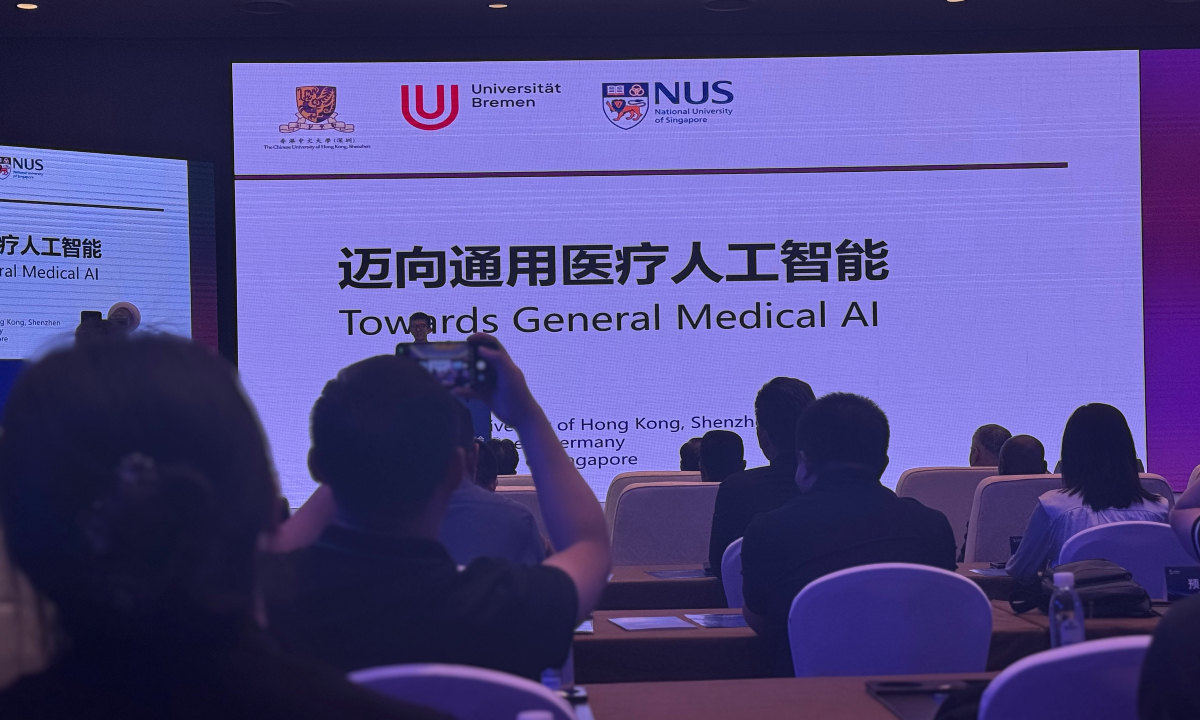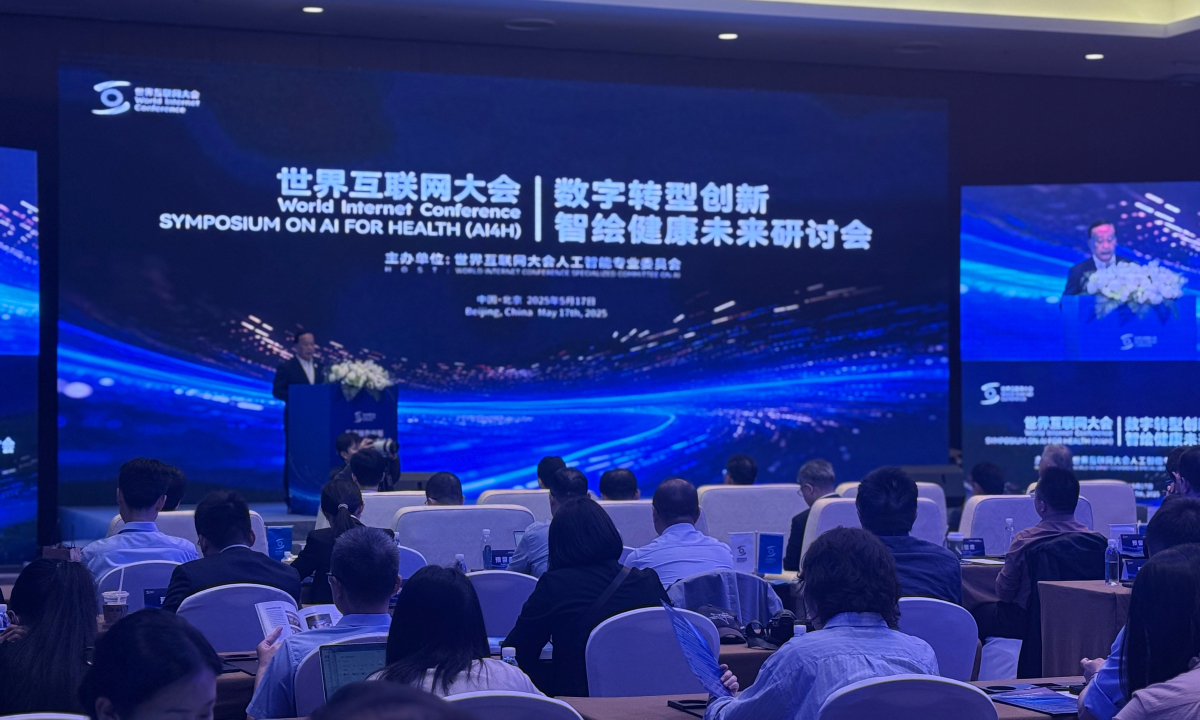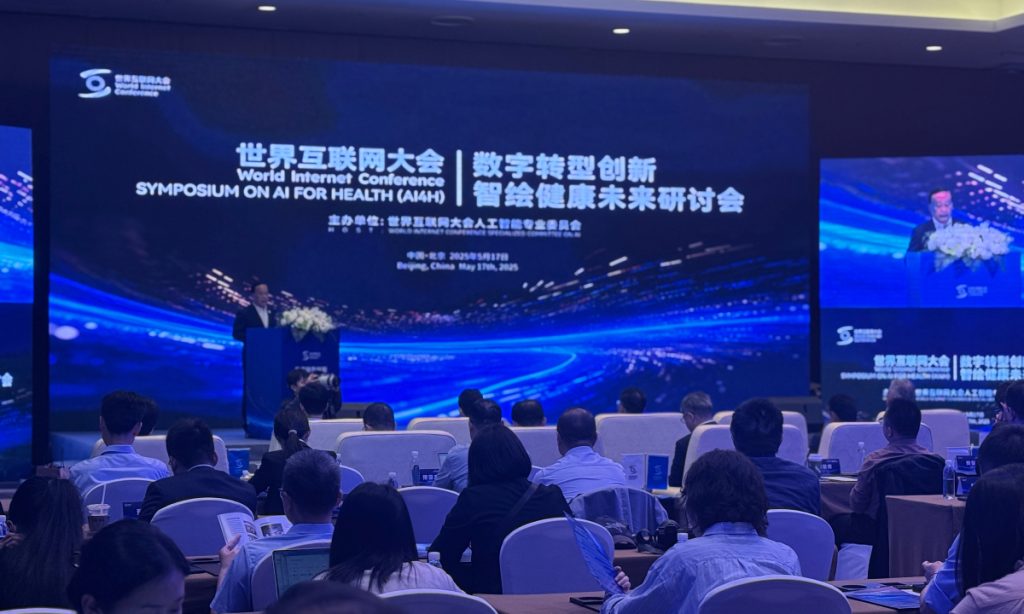
Photo: One representative from a hospital shares his views at a symposium on AI for health hosted by World Internet Conference Specialized Committee on AI in Beijing on May 17, 2015. Liu Caiyu/GT
A symposium on AI for health, hosted by the World Internet Conference Specialized Committee on AI, took place in Beijing on Saturday. The Global Times learned that over 800 public hospitals nationwide have integrated DeepSeek systems as part of their efforts to make AI technology a core part of service delivery during the symposium.
Multiple leading hospitals showcased their latest AI research and development applications during the event. Li Haizhou, executive dean of the School of Data Science from the Chinese University of Hong Kong in Shenzhen, introduced a large language model specialized in traditional Chinese Medicine – TCM Omini – backed by its HuatuoGPT-o1 developed by his team.
The model incorporates the four traditional TCM diagnostic methods: observation, listening and smelling, inquiry, and palpation. It is capable of utilizing image recognition to analyze visual information, including tongue appearance, capturing sounds and odors through voice and olfactory sensors, and using natural language processing to extract symptoms and medical history. Additionally, it integrates pulse sensor data and analyzes pulse patterns through signal processing and pattern recognition, according to Li.

Photo: One representative from a hospital shares his views at a symposium on AI for health hosted by World Internet Conference Specialized Committee on AI in Beijing on May 17, 2015. Liu Caiyu/GT
PUMCH-GENESIS, an AI large model designed for the diagnostics of rare diseases, was jointly developed by Peking Union Medical College Hospital (PUMCH) and the Institute of Automation, Chinese Academy of Sciences (CASIA). It was unveiled by the PUMCH at the event.
Yang Dungan, the secretary of the Discipline Inspection Commission at this hospital stated that it addresses one of genomics’ most persistent challenges: the painstakingly slow interpretation of whole genome sequencing (WGS) data. Currently, even expert clinicians can analyze only four WGS reports per day, creating a bottleneck for patient care. This new system, powered by deep learning and hybrid data-knowledge fusion, is able to redefine efficiency and accuracy in genetic diagnostics.
As one of China’s leading hospitals, PUMCH has over 80 artificial intelligence applications currently being implemented, covering areas such as patient services, clinical diagnosis and treatment, medical research, and hospital management, as revealed by Yang.
For Shanghai’s Ruijin Hospital, Zhu Lifeng, the deputy director of the Shanghai Digital Medicine Innovative Center, stated that Ruijin Hospital places great importance on using data and has been working on building multimodal and multi-disease medical corpora for various medical tasks, as it believes data is the most valuable resources for AI development.
Ruijin Hospital has utilized health data for quality assessment measurements, organization of data time series, alignment of multimodal clinical data sets, and granular data annotation. Zhu said that the total amount of health data available at Ruijin Hospital has reached 5PB, with an annual data increment of approximately 1.5PB due to the emergence of new medical technologies.
The rise of DeepSeek has contributed to the increased deployment of AI technology in China’s hospital systems, Min Dong, deputy director of the Cloud Computing and Big Data Research Institute at the China Academy of Information and Communications Technology, stated at the event. As of May 3, over 800 public hospitals nationwide have deployed the DeepSeek system, covering medical institutions at all levels, he added.
Min stated that AI has significantly increased the efficiency of service delivery and management, adding that existing challenges facing the large-scale application of medical AI also need to be addressed.
He noted that algorithms have limitations that can lead to distorted outputs and the risk of hallucination. The lack of high-quality datasets for specialized medical conditions results in poor data quality for training and inference, while the data training process poses safety and privacy risks, he further noted.

